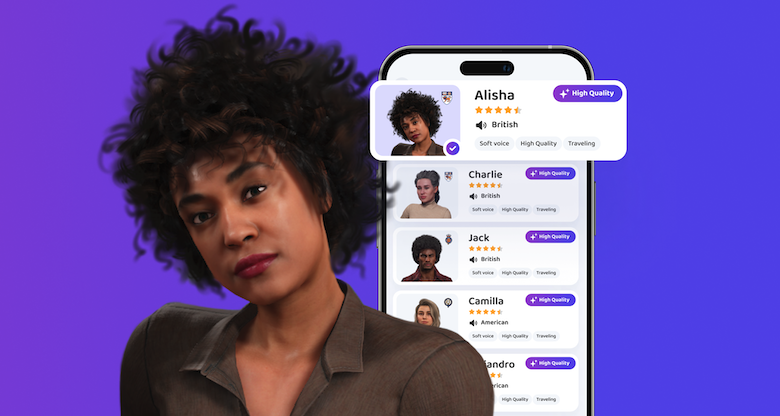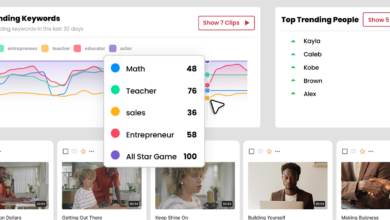
It’s a jungle out there in the language learning market, with new AI-based apps emerging daily. Is there a surefire path to outpace the competition? Those startups that master the art of user retention will dominate the market. Hyper-realistic avatars, delivering personalized curriculum, might just be a key component of a winning strategy.
Sinking millions of dollars into promotion doesn’t serve language learning startups as well as it used to. Since AI-powered apps started sprouting like mushrooms after the rain on ProductHunt, other advantages besides marketing budgets are becoming critical.
Monetization imperative
Access to data, a strategic focus on a unique niche, non-standard promotion channels, and community building are just some of these strengths, but they should be combined with a deep domain expertise in AI.
Most startups now realize that they should genuinely create value, and not merely serve as GPT4 extensions. OpenAI’s ability to kill thousands of solutions with one update has revealed this pivotal point.
Creating value allows startups to monetize quickly. It’s a particularly critical aspect given the shifting dynamics of the freemium business model that most language learning services used in the past.
Not many startups can afford to develop like Duolingo, making the core language learning features free to boost acquisition rates. In the past, startups grew their user base first. Later, this allowed them to monetize.
Now, AI language apps realize that expenses on servers, LLMs, and upgrades are so costly that no investment round can compensate.
Turning “extinction” into opportunity: Insights from 2023
The year 2023 became ‘an extinction year’ for the startup ecosystem. Fueled by soaring interest rates and a banking crisis, the downturn led to a scarcity of venture funding for early-stage companies. The annual fundraising figure for 2023 is the lowest since 2015.
The current economic uncertainty is pushing startups, including language apps, to become profitable as soon as possible. VCs are aligning their expectations with this trend, urging founders to demonstrate revenue streams and sustainable monetization strategies even in the early stages.
Can this crisis be an opportunity? Absolutely. New economic conditions, coupled with advancements in AI, provide everyone with an equal chance to succeed.
The reason is that the apps of the previous generation are also upgrading their business models to stay competitive. Their premium AI features aren’t free. This leveling of the playing field means that everyone now has a fair and equal chance.
Users who tried to improve their language skills with free apps found out about new, more effective, AI-driven features. For instance, avatars who remember student’s previous responses can give them real-time feedback and can ask about “that job interview” they’ve been preparing for.
Why the future of language learning is AI
AI-based tutors don’t make mistakes. They customize their programs according to your needs. And they can be as personal, supportive, and empathetic as an individual human tutor.
As Adobe Chief Strategy Officer Scott Belsky recently pointed out, tone of voice is the “UI of the natural language,” and it’s a pretty unexplored spectrum of possibilities. Technology has advanced to a point where avatars can talk and vibe like the best and even most expensive human tutors. It’s as if they mastered kindness and personal touch to a tee.
In the future, a simple quiz, no matter how free, won’t attract users who have experienced superior technology. But learners are increasingly savvy and, as they leave free apps, they won’t just jump into any kind of new service. They’ll look for the best return on their investment.
Unless big EdTech companies prove they are also leaders in the AI race, new apps will be able to beat established market players. For now, however, the chances are equal. AI is available for all, and the capabilities of a three-people team are incredible, rivaling those of a much larger corporation.
The competition for user retention is escalating. And the apps that provide the best learning experience and rapid improvement in language skills will win.
What do hyper-realistic avatars have to do with it?
Avatars provide a simulated tutorship experience and a human touch that many language learning apps, including AI-based ones, are missing. So people who want to have a real tutor but, for various reasons, don’t have access to one, can enjoy the maximum benefit of this immersive learning.
According to estimates, education brings an average return of about 9-10%. This means that every year of learning generates about 10% of earnings annually. With their personalized curriculum, high engagement, and empathy, avatars have the potential to provide a better return on education than most human tutors.
When we started creating our human-like AI tutors, investors questioned our approach. Mostly hyper-realistic avatars exist in customer support to provide an engaging experience for users. Somehow, not that many people in language learning saw the need for this.
I am sure that with our approach, not just EdTech, but LegalTech, HealthTech, and other startups will be able to discover fascinating differences in effectiveness for users and customer retention.
Here’s what we discovered.
With hyper-realistic avatars, learners improve faster
People are increasingly treating machines as if they were humans, even sharing their thoughts and experiences. It is striking how the conversations of our learners and AI are similar to the dialogues one might have with human tutors.
They share their anxiety before an important job interview, concerns about their accents, or worries about moving their place of residence while learning the language, and much more. Avatars respond, mirror their emotions, and support them. OpenAI’s retrieval tool allows them to do this, also helping to remember the information and checking on a user later.
The synergy of personalized curriculum and avatars increase retention. A user who experienced this personal connection with a hyper-realistic avatar wants to return for more. AI’s human-like touch gives students an extra motivation to learn so that their language skills improve faster than in traditional apps.
Of course, content is important. Users who initially engage with an avatar end up staying for personalized curriculum, from onboarding and placement to tailored educational formats like flashcards, conversations, or grammar exercises.
In addition, however, learners bond with avatars, treating them like friends because of their hyper-realistic appearance versus the once-trendy robotic avatars.
Any communication enhances user experience and motivates people to learn. And motivation is a challenge that the EdTech industry has yet to overcome. For AI-based language-learning platforms to thrive, they need to simulate human-like experiences to the fullest.





